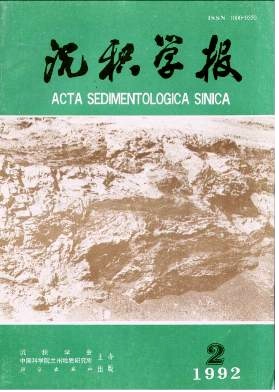The Relationship Between The Hydrodynamics and the Migration and Accumulation of Hydorcatbons in Jiuxi Basin
- Received Date: 1991-05-24
- Publish Date: 1992-06-10
Abstract: From the cyclic points of view, the present paper deals with the relationship between the underground water flow and hydrocarbons in Jiuxi basin. Two hydrogeological cycles can be classified in Jiuxi basin: Cretaceous and Cenozoic hydrogeological cycles, and each cycle can be further divided into two stages: compaction-driven and gravity underground water flow stages. Due to sedimentary great thickness and rapid depositional rates in Cenozoic hydrogeological cycle, compaction-driven hydrodynamic system was active and centrifugal, resulting in discharge zones in the southern and northern basin. Cap discharge favourable for hydrocarbon accumulation was formed in the southern basin because of caprocks of high quality and great thickness, and open discharge giving rise to hydrcarbon loss was formed in the northern basin because of caprocks of poor quality. After Ximalaya movement, the basin was uplifted and centripetal gravity flow should be formed due to the elevated periphery, but the compaction-driven hydrodynamic system in the southern basin was not replaced by the grqvity flow system because of caprocks of high quality. Despite of strong uplift of Qilianshan, the dominance of compaction-driven hydrodynamic system has continued to the present. In the northern basin due to caprocks of poor quality, the gravity flow system replaced rapidly the compaction-driven flow system and thd present flow direction reflects the hydrodynamic state of that stage. The late strong uplift of Qilianshen give rise to the tilt of the basin to the north and the flow direction in the northern basin is not changed because of shout time and low permeability. The investigation of the hydrodynamic and hydrochemical fields indicates that the hydrocarbon accumulation zone of the southern basin is arranged in the stagnant zones of discharge in the compaction-driven flow of the Cenozoic hydrogeological cycle, and the northern zone is in gravity flow stage. With the finite difference method in the permeable equation for the underground water in hydrogeology, the hydrodynamic configurations in different stages in the consolidation basin are obtained in the preaent paper, the water currents after the maturity of the source rocks are examined in details, and in consequence, the hydraulic trap zones favourable for the migration and accumulation of hydrocarbons can be proposed here-the low hydraulic head zones in the high hydraulic zones, the zones of steep hydraulic head gradient, i.e., the stagnant zones of discharge.
| Citation: | Zhang Jianlin, Tao Yichuan, Wang Changgui. The Relationship Between The Hydrodynamics and the Migration and Accumulation of Hydorcatbons in Jiuxi Basin[J]. Acta Sedimentologica Sinica, 1992, 10(2): 109-118. |






 DownLoad:
DownLoad: